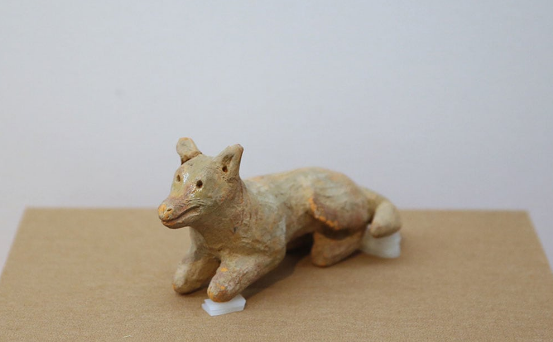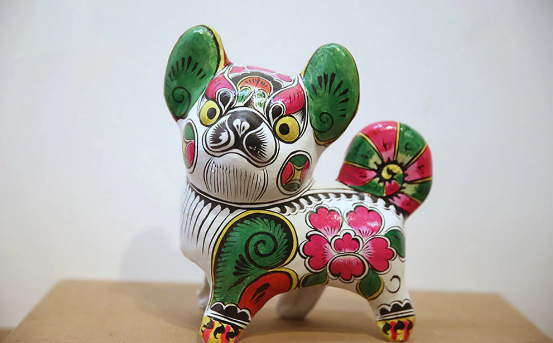- 中文
- EN
- Français
- 日本語
- 한국어
- 繁體中文
Dog artefact exhibition heralds Chinese new year

Visitors explore a canine-themed exhibition, including items from Dawenkou culture, at the National Museum of China to mark the Year of the Dog
The National Museum of China has a wide range of canine-inspired pieces on display, including a Neolithic pitcher, to mark the Year of the Dog.
Dawenkou culture, a label archaeologists have given to a range of Neolithic communities, is derived from the name of a north-eastern Chinese town in present-day Shandong province.
Among its artefacts were the pottery pitcher with three legs, known as a gui, that was used for cooking and made in a variety of forms.
One such dog-shaped pitcher of Dawenkou culture is part of an exhibition at the National Museum of China to celebrate the Year of the Dog beginning on 16 February.
Dozens of other artefacts from the museum’s own collection bearing the dog motif are on show until 30 March 2018.
The exhibits are in various materials, such as clay, jade and paper, and include ink paintings showing ancient Chinese hunting, accompanied by dogs.
Also on show is a painting of a dog by Giuseppe Castiglione, an Italian missionary who served in the court of Emperor Qianlong during the Qing Dynasty (1644-1911).

A trio of ceramic dogs 
Pottery dog from the Han Dynasty (206 BC–220 AD)
Another pottery dog from the Han Dynasty (206 BC–220 AD)
Colourful Chinese clay dog
Amber dog from the Qing Dynasty
A painting by Italian missionary and court painter Giuseppe Castiglione
A bronze-gilt plate featuring patterns of 12 zodiac animals



